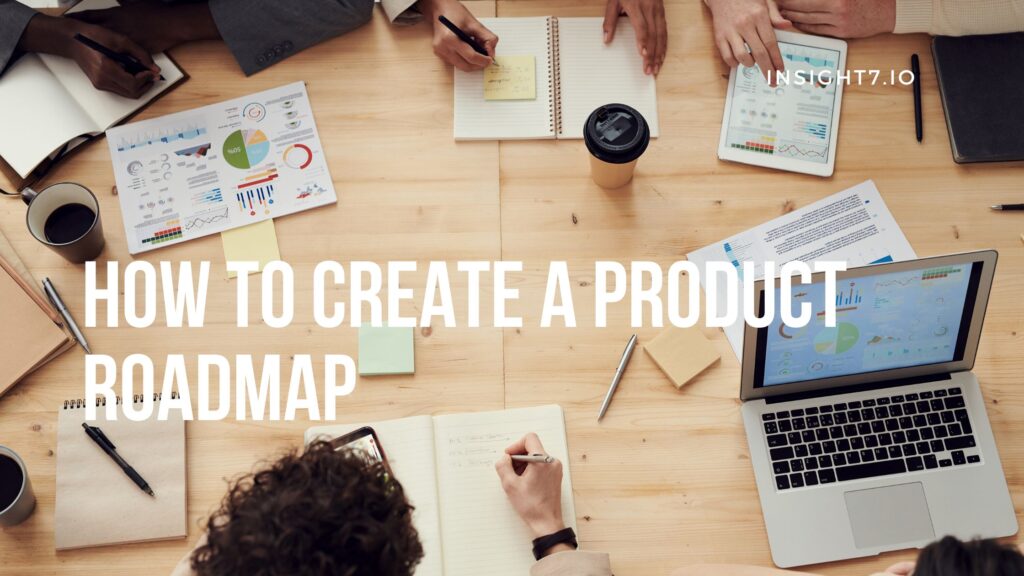How To Create A Product Roadmap
-
Hello Insight
- 10 min read

Building a product roadmap starts with strategy — you must establish the product goals and initiatives that your efforts will support.
Once those are defined, you can decide which releases and features are best aligned with your strategy and then visualize it all on a timeline.
How To Create A Product Roadmap
A few considerations will shape your road mapping process. One is your audience — what you show on your roadmap depends on your intended viewers.
As you build and customize your product roadmap, you can make additional decisions about which details to include (and which to leave out) so that the information portrayed is relevant to whoever is viewing it.
For example, the leadership team will want to understand the strategic importance of what you will deliver, conveyed through roll-up relationships between major releases and associated goals and initiatives.
Your product marketing team, on the other hand, will be more concerned with the details and dependencies — so they can track and visualize moving pieces leading up to a product launch and coordinate all go-to-market plans accordingly.
You might share a version of your roadmap with customers too. Customers will want to see what is upcoming — especially any critical functionality they need.
On a customer-facing roadmap, you might choose to show a broader release time frame instead of an exact date so that you have flexibility to shift if necessary.
Your product roadmap will also reflect the development methodology that your organization follows.
For example, an agile team will create a product roadmap that is incremental and flexible to accommodate changes in customer needs and the market.
But product roadmaps for organizations following a traditional waterfall approach will be more fixed — conveying a long-term commitment to building specific features within a given time frame.
Components of a product roadmap
The details and context may vary, but all product roadmaps should include a few key elements. Here is a quick overview of the main components you need:
- Goals: Measurable, time-bound objectives with clearly defined success metrics. Goals represent the critical accomplishments needed to deliver your product.
- Initiatives: High-level themes of work describing how your efforts will contribute to your goals. On a roadmap, initiatives show how specific releases and features relate to your strategy.
- Releases: A launch of new product functionality represented on a timeline. Releases often contain multiple features that get delivered at the same time.
- Epics: Larger bodies of work (like categories) that typically span multiple releases. Epics break down into smaller features that are delivered incrementally.
- Features: A specific piece of new or improved functionality that results in value to users. Features can be related to capabilities, components, appearance, and performance.
- Timeline: A visualization of when product releases will occur over time. The time scale can range anywhere from days to quarters or years depending on the amount of work and level of detail involved in a particular release.
How to create a product roadmap
With these components and considerations in mind, here are the five main steps to building a product roadmap:
1. Define your product strategy
As mentioned above, setting strategic product goals and initiatives is an important first step in building a roadmap.
Strategy is the “why” behind your product — it explains how your efforts will support the overall business.
You will also need a strong product vision — capturing who your customers are, what they need, and how you will go to market with your offering.
💬 Questions about How To Create A Product Roadmap?
Our team typically responds within minutes
Together, the elements of your product strategy will inform everything that goes on your roadmap.
2. Review and manage ideas
Most product teams have a constant influx of product ideas from customers and customer-facing internal teams.
When these ideas are organized and prioritized, they are valuable input for deciding what to put on your roadmap.
For an objective method of idea evaluation, try scoring ideas based on metrics that reflect your strategy.
3. Define features and requirements
This is when your product roadmap starts to take shape. With your goals, initiatives, and prioritized ideas to guide you, identify the specific product features that you want to deliver.
Use a template or tool to put your features into words, add the necessary details in the requirements, and group related ones into epics (if needed).
Anything valuable that does not fit on the first iteration of your product roadmap can be saved for later in your product backlog.
At this stage, you can also translate your features into user stories to describe the benefit from the customer’s perspective. User stories give your engineering team the context they need to implement the best solutions.
4. Organize into releases
Up to this point, you have focused on defining the “why” and the “what” for your product roadmap — next, you will think about the “when.”
Once your features are prioritized and sorted, you can plot out your delivery timeline with releases.
Releases are often organized by product launch but some teams prefer to arrange their roadmaps based on development capacity.
5. Choose roadmap views
To get your product roadmap up and running, the final step is to visualize everything you have defined up to this point.
Try roadmap templates or a roadmapping software tool to experiment with different roadmap views.
Consider the following questions to help you decide what to include:
- Who needs to see this product roadmap?
- What is the most important information I want to convey?
- Does my audience care more about the big picture or details?
- Does my audience need to know general timing or exact dates?
💬 Questions about How To Create A Product Roadmap?
Our team typically responds within minutes



